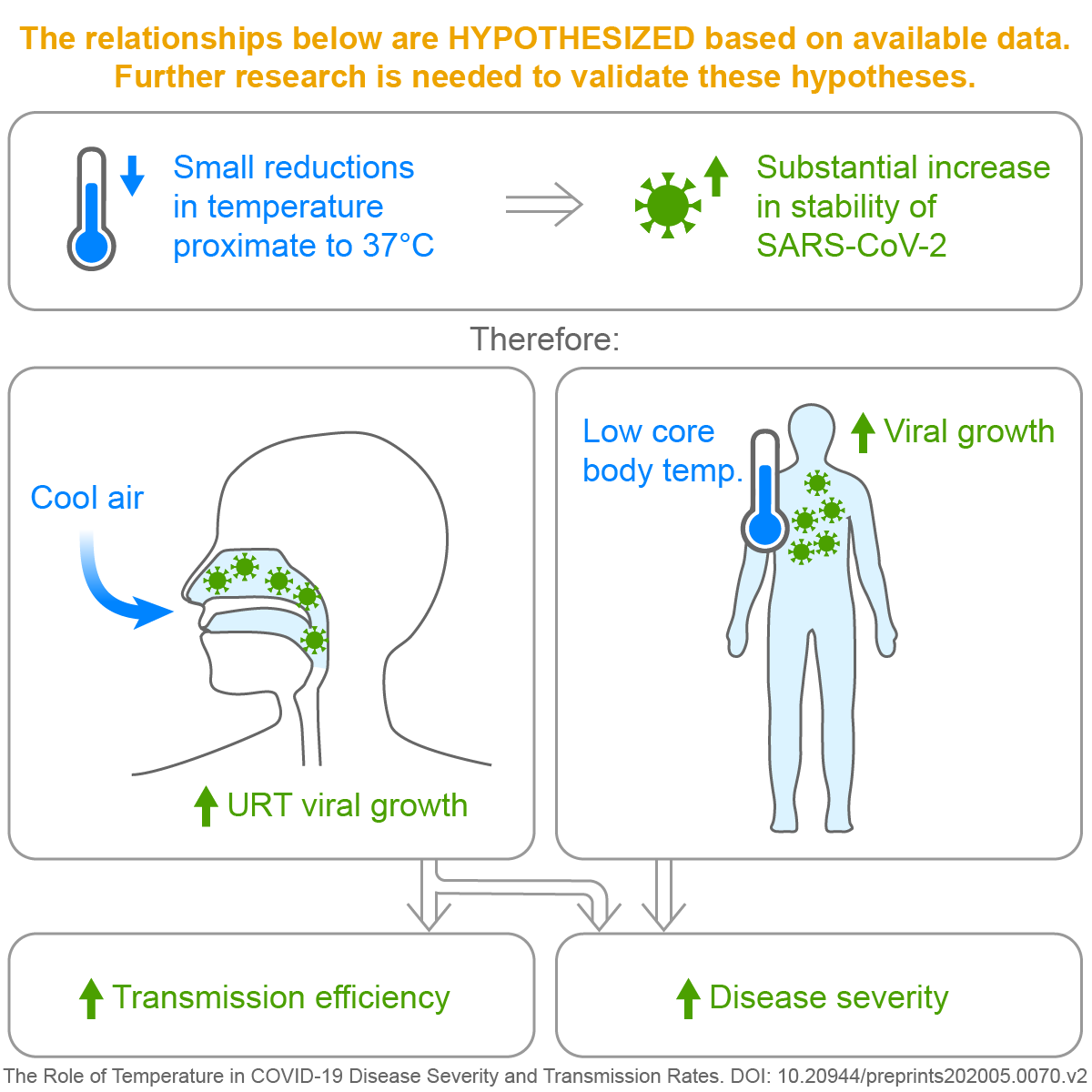Air temperature and body temperature may influence COVID-19 disease severity and transmission rates. In vitro data indicate that SARS-CoV-2 loses infectivity at normal core body temperature (37°C); however, small reductions in temperature proximate to 37°C may result in substantially increased viral stability. If these results are representative of viral decay rates in vivo, then cooler temperatures in the body may enable more rapid viral growth. Breathing cool air—even as warm as 25°C—cools upper respiratory tract (URT) surfaces to several degrees below body temperature, and these lower temperatures may make the URT exceptionally conducive to SARS-CoV-2 replication. Increased URT viral load may enable more effective transmission. Additionally, because SARS-CoV-2 infection may frequently begin in the URT before spreading through the body, an increased rate of viral replication in the URT early in the disease course may result in more rapid progression of disease, potentially causing more severe adverse outcomes. Core body temperature may also be a factor in disease severity, as lower core body temperatures may enable more rapid viral growth. The significance of air temperature and body temperature to disease severity and transmission rates may inform preventative measures and post-exposure prophylaxis treatments for COVID-19.

